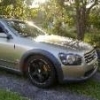Stagea Awd Or 4wd
Announcements
-
Similar Content
-
Latest Posts
-
By BourneToLive · Posted
So was there a solution to this problem? I’m having this issue now. -
not expensive, just irreplaceable if you don't go sub 60 at wakie in that thing people will start talking
-
I haven't replaced that, but I have had the doors apart on the r32 a couple of times The door skin will be held on by a combination of clips and bolts, just take it slowly and make sure all the sneaky hidden bolts are out Once the skin is off you should be able to pop that piece off pretty easily, looks like there are only 2 bolts holding it on
-
Used the same EFI hose that I used for the fuel filter hose. Hopefully that was the right hose.
-
This hose was one of the worse jobs I've had to do so far. When my hose went the radiator overflow started boiling like a kettle. Took a while to even find that hose.
-






Recommended Posts
Create an account or sign in to comment
You need to be a member in order to leave a comment
Create an account
Sign up for a new account in our community. It's easy!
Register a new accountSign in
Already have an account? Sign in here.
Sign In Now